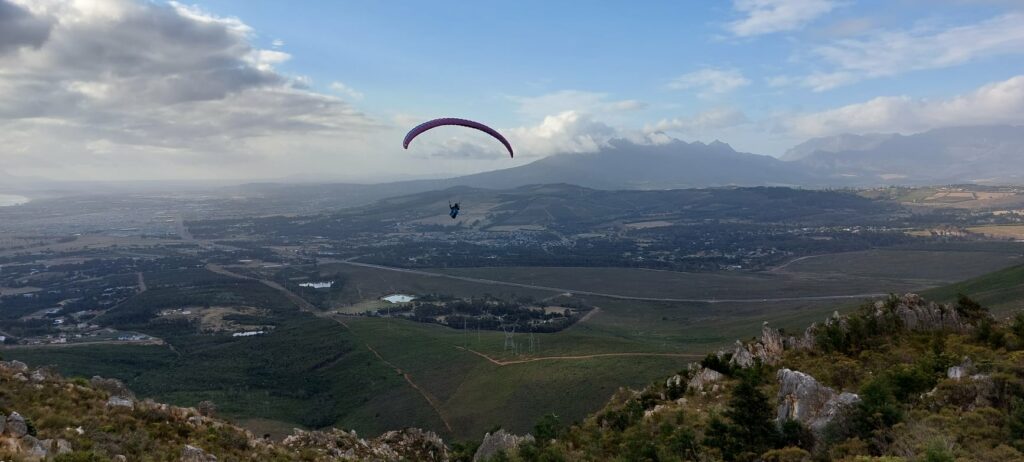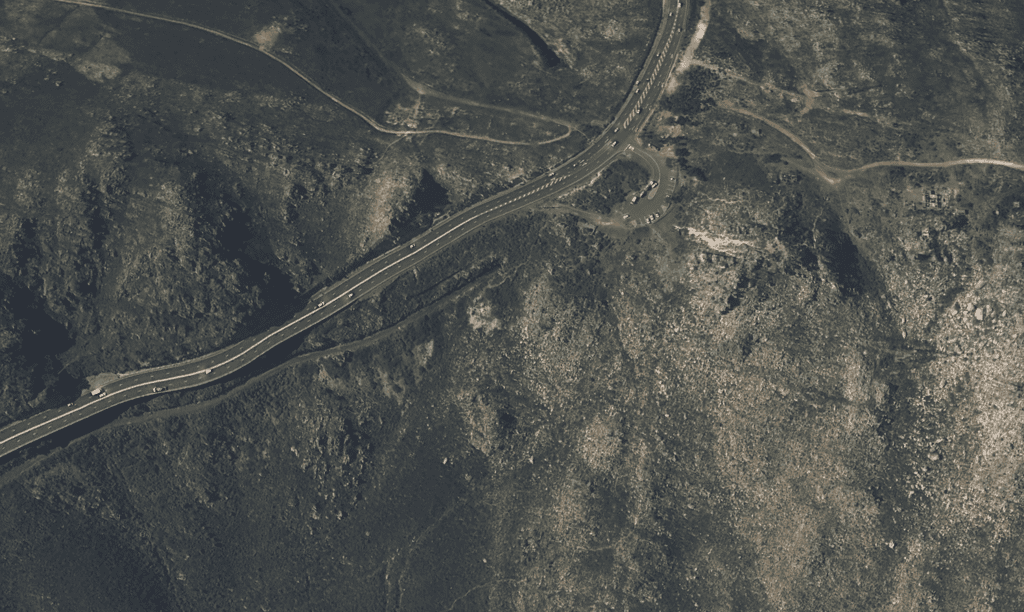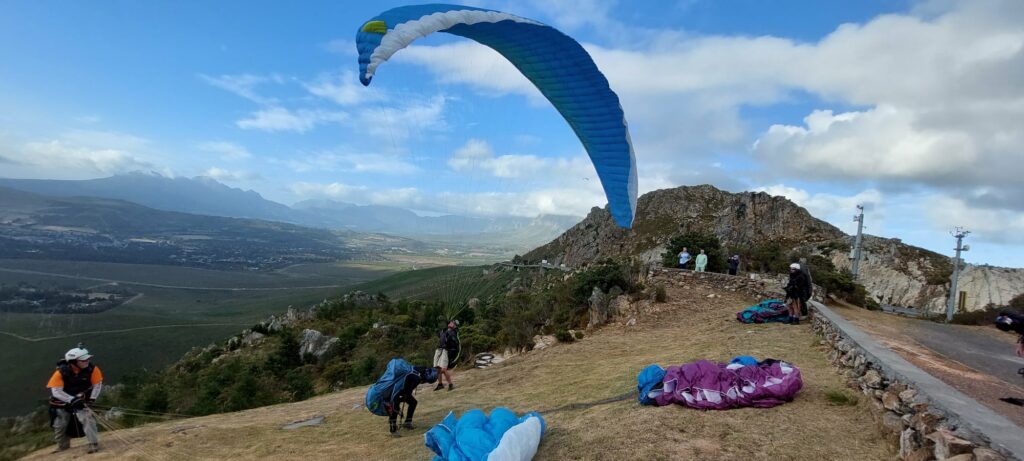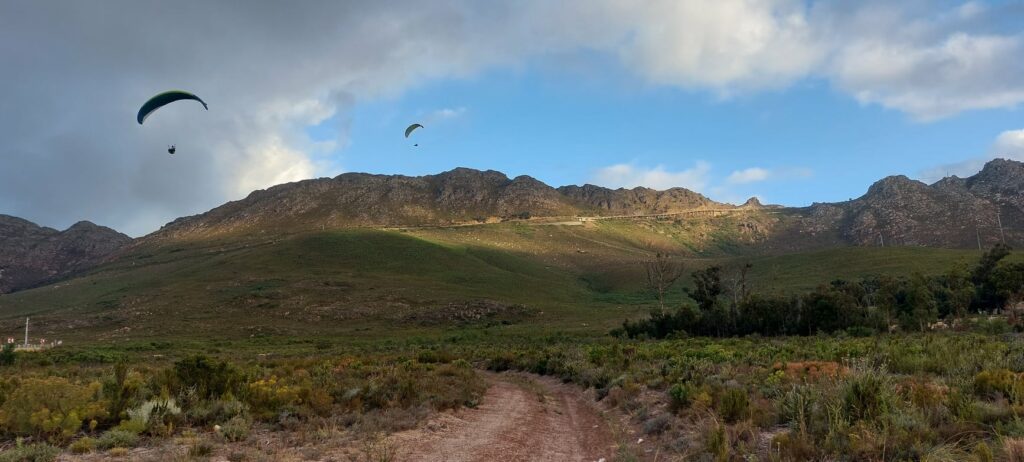A regular site that offers soaring, thermalling and cross-country, with superb views. The long mountain chain extends in a fairly consistent ridge to the south. To the north of takeoff the ridge rises to become towering mountain peaks, then curves to form a semicircle. Thermals can be strong, taking you high up and away from the earth, into the blue.

Requirements
- Valid SAHPA Membership with minimum of a Basic licence (IPPI 4)
- Foreign Pilots must be in possession of a SAHPA Foreign Membership
Wind
- North-West (NW) to South-West (SW)
- Severe wind gradient in a North-West wind.
- If the wind swings South, conditions will get very turbulent, and toplanding dangerous.
- It is sometimes flyable with a light SE, in lee-side wind-shadow conditions. Watch the ocean for signs of the wind-line deteriorating.
Geography
- GPS: +- S34o08.917’ E18o55.65’
- Height: 320m (420m ASL)
- Airspace ceiling: 1200m ASL.

Launch
Launch for competent pilots (very good ground-handling skills) from the grassed slope below the wall, where turbulence from the big rocks to the right or left can make it risky. If you misjudge the wind, you are likely to get blown back into the carpark.

HG: A-grade lower launch is about 500m down the road, just below the railway line.
Landing
At the base of the pass, on the South side of the road, before the pine trees is a bald spot. Anywhere close by, in the low bushes is okay, but be careful not to damage the sensitive fynbos. Be careful of the big set of powerlines on final approach on the far side of the landing spot, between it and the highway. Please do not land too close to the road, as you may cause an accident. More experienced pilots can land a little further on, at the second clearing where the retrieval road turns off the base of the pass. Top landing is not recommended when the carpark is congested (weekends, holidays) or for Basic Pilots. If the air is thermic or the wind crossed, top-landing is very risky.

Directions
N2 towards Caledon, at the top of the Sir Lowry’s Pass, turn right into the viewsite. Beware of baboons (keep windows closed and food out of sight).
Cautionary Notes
- Light aircraft fly beneath the controlled airspace. Beware!They will come over at the low point (the Pass). An air-band radio would help to avoid a conflict.
Caretaker
- Overberg PG Club
- CAHGC